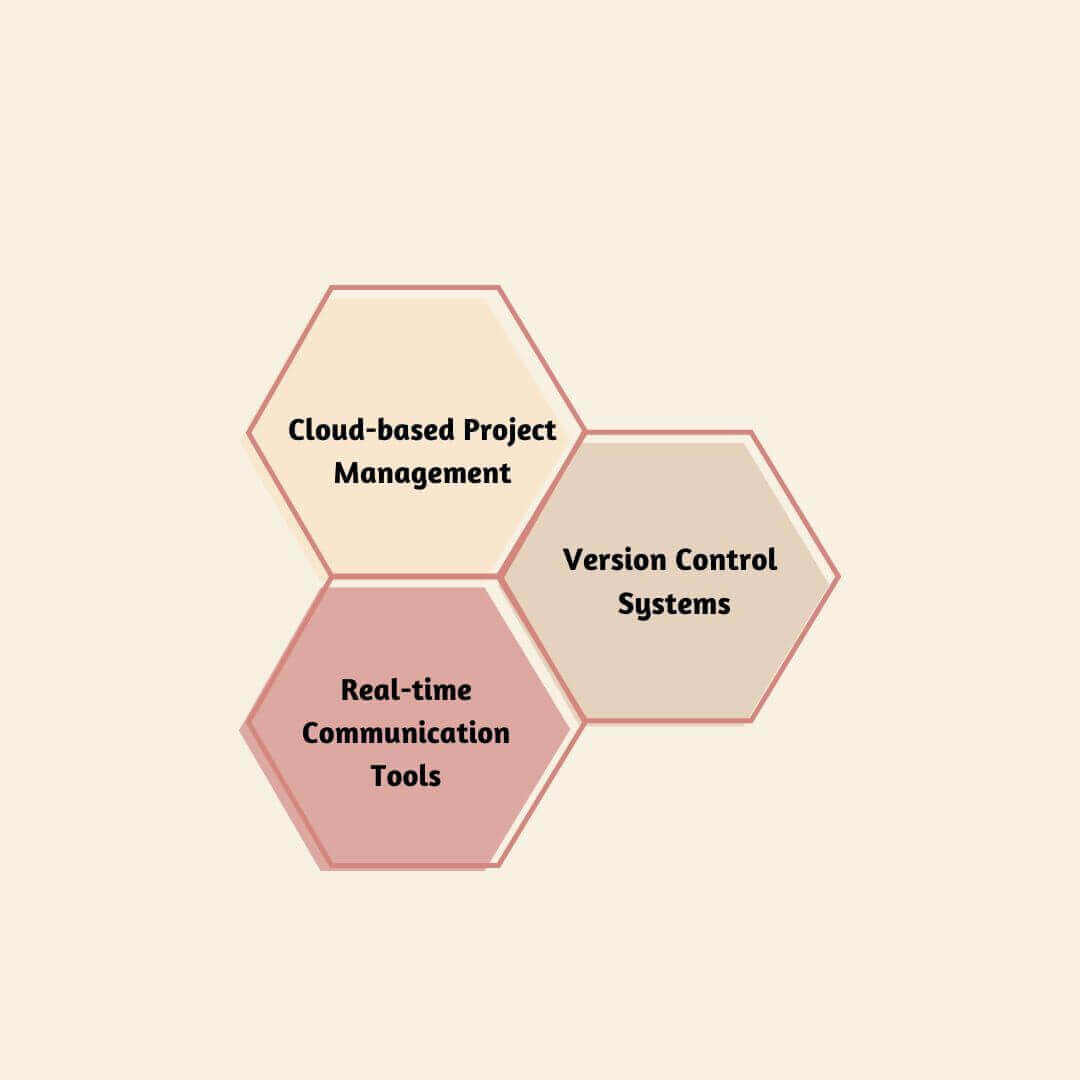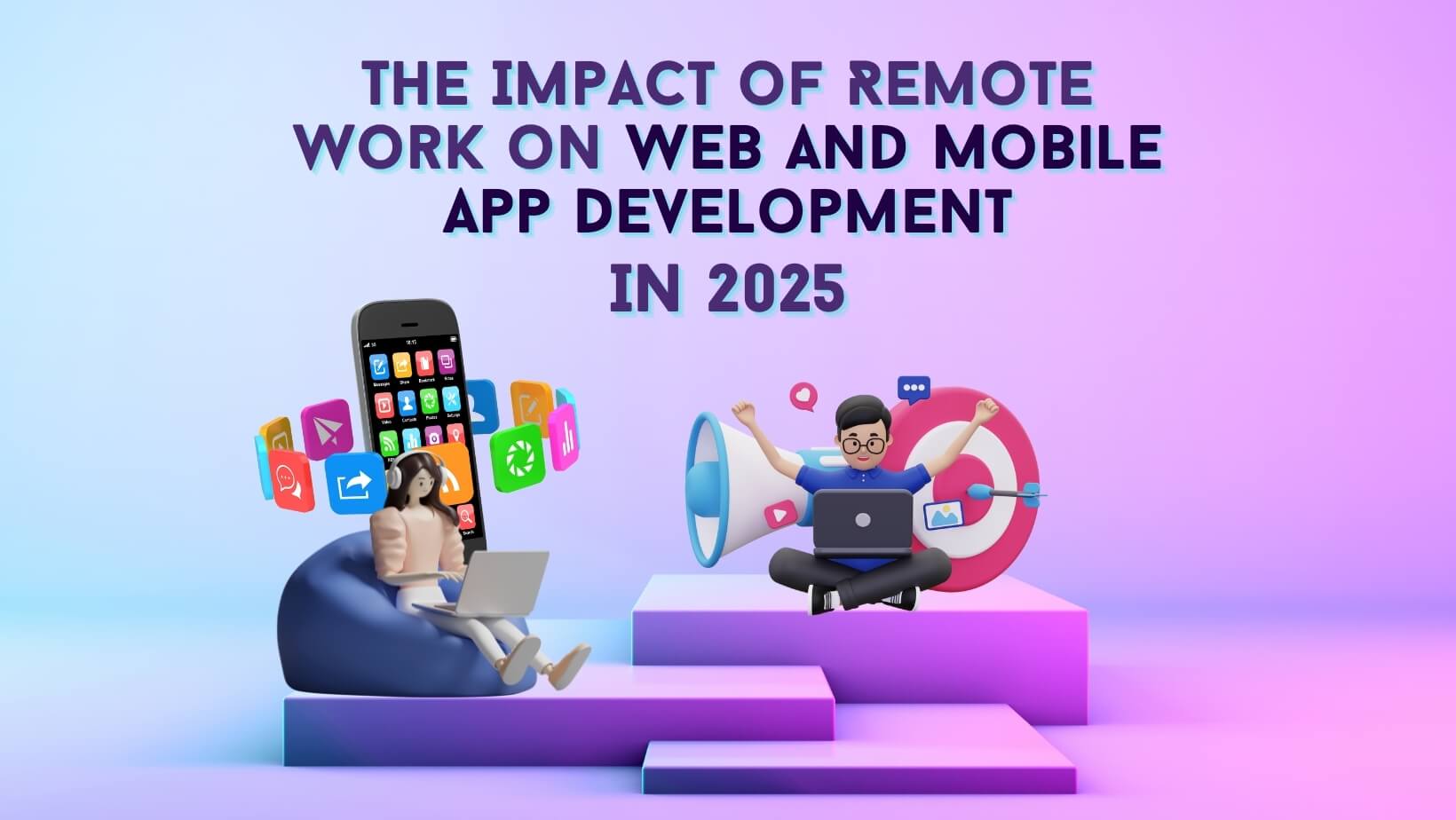Remote work has become the cornerstone of success for modern industries, and its impact on the tech domain is paramount. Imagine this: a small software development team scattered across multiple locations, collaborating without breaking a sweat on a cutting-edge mobile and web app. How cool is that? While one developer is tuning code from a pristine beach in Bali, another joins a sprint review from a cosy corner of his room in California. This might have seemed a far-fetched dream only a few years ago. Cut to chase: it’s now a reality for several app developers around the world.
This major shift in work culture isn’t just another trend—it’s a revolution reshaping how mobile and web apps are built and deployed. How developers used to collaborate, communicate, and create has forever changed. Now, how has it impacted the software development process? How have the tools and strategies evolved over the years, and what does the future hold for developers in this new, borderless world?
Table of Contents
ToggleThis blog dives deeper into the transformative effects of remote work on mobile and app development in 2025.
Here you go …
1. More Globalized Development Landscape
The globalization of software development teams is probably the most apparent change due to remote work. Previously, companies often relied on local talent. But today, teams are scattered globally, leveraging diverse skills, perspectives, and languages.
The globalization brings in a profound wealth of key benefits, such as:

- Companies can onboard top-notch developers, regardless of location, even in niche domains such as Augmented Reality or Blockchain Technologies.
- Thanks to time zone differences, development teams can work around the clock.
- Also, with cultural diversity and creativity, a more diverse team can bring unique solutions to the table.
Having said that, a global workforce may attract specific challenges in the form of cultural misunderstandings and language barriers. However, with the right tools and frameworks in place, these merely remain obstacles. Let’s explore more in this context.
2. Shifting Collaboration Dynamics
Remote work has fundamentally changed the face of developer collaborations. In conventional office environments, teams often work closely together in person. With remote teams making their presence felt, the collaboration has shifted to digital spaces.
Here’s how.

- When it comes to cloud-based project management, tools like Jira, Trello, and Asana have become integral parts of every development process. These platforms allow teams to manage various tasks, sprints, and deadlines from anywhere worldwide. In 2025, these tools will become more sophisticated, with AI-powered assistants helping prioritize tasks and identify potential roadblocks before they worsen.
- Platforms like GitLab, GitHub, and BitBucket also play a crucial role in version control. They allow multiple developers to work on the same code with no chance of overwriting each other’s work. As a result, we can see remote collaboration thriving with these tools and platforms, allowing web and mobile software development teams to pull requests, merge branches, and track changes without hassle.
- Also, real-time communication tools like Slack, Microsoft Teams, and Zoom have become significant parts of the remote work ecosystem. What once used to be an occasional video call is now a constant. From channels dedicated to specific topics to video discussions for brainstorming and file sharing, things are much easier these days as these tools make remote collaboration feel almost as natural as in-person interaction.
The Role of Remote DevOps and Continuous Integration/Continuous Delivery (CI/CD)
In 2025, mobile and web app development processes have been revolutionized by the emergence of CI/CD pipelines and DevOps. The remote work ecosystem makes streamlined workflows and automation all the more critical in all aspects. With teams working from different locations, having strong tools and systems in place ensures seamless deployment and timely updates.
Here’s how it works.
DevOps and Automation
DevOps elements have become essential for remote workers. Developers nowadays heavily rely upon automation to ensure the code always remains deployable. Continuously integrating CI tools like Jenkins, Travis CI, and CircleCI paves the way for automatic testing and code integration. It further ensures that new features, elements, and bug fixes do not break the software application.
Seamless Updates and Delivery
Continuous Delivery (CD) allows apps to be updated frequently and reliably. When it comes to remote teams, this approach will enable developers to roll out new features and bug fixes without experiencing the odds of long delays and the complications of manual processes.
Collaboration Between Development and Operations Teams
In a remote work environment, operations teams and developers often collaborate via shared documents, automated scripts, and communication tools. This fine synergy ensures that both deployment and coding processes are synchronized, thus reducing friction and enhancing efficiency.
Remote Work and the Tools That Make It Possible
The tools for app development in 2025 are more powerful and designed explicitly for the remote-first environment. Here’s how cloud computing plays a significant role in facilitating remote work for developers.
Cloud-based Development Environments:
Platforms like Replit, Gitpod, and GitHub Codespaces allow developers to code directly in the cloud. This means they can access a fully functional deployment environment from anywhere without relying on their personal systems.
Design and Prototyping Tools:
Design and prototyping tools like Adobe XD, Sketch, and Figma are cloud-based, allowing real-time collaboration on designs. As a result, designers and developers can collaborate more effectively to iterate on UXs and UIs. This evolution makes the entire software development cycle much faster and easier.
Cross-platform Frameworks:
Cross-platform frameworks such as Xamarian, Flutter, and React Native work wonders for developers. These tools make it easier for them to develop apps that work across multiple platforms under the sun. These platforms allow the ability to work on responsive, scalable, and adaptable apps without creating separate codebases for iOS and Android.
Challenges and Solutions for Remote Development Teams
Now that you know the broader dimension in this context of the discussion, you must know there is a fair share of challenges and potential roadblocks associated with remote development teams. Likewise, there must be solutions that can be curated to endure some of the most common difficulties experienced by developers.
Let’s figure out.
Unclear Communication
Communication breakdowns can damage an otherwise smooth-sailing development team. Without face-to-face interaction, misunderstandings can become frequent. Thus, in order to address such issues and overcome the challenges, one must invest in clear documentation, frequent check-ins, and the right platforms and tools for smooth communication down the road.
Isolation and Burnout
Remote work often leaves people in a state of isolation and monotony. Moreover, developers may struggle to separate personal life from professional space due to home-based environments and flexible hours. Development teams must encourage social interaction through frequent virtual meetups, establish a healthy work-life balance, and leverage tools and platforms that promote engagement.
Security Concerns
Security becomes a major concern with various devices and locations used across development processes. Companies must implement strict measures, including two-factor authentication, VPNs, and encrypted communication channels, to protect sensitive data from theft and breaches.
Looking Ahead: The Future of Remote Development
In 2024, 20.3% of job postings in India were hybrid, while 10.0% were fully remote, highlighting a growing trend toward flexible work arrangements. Similarly, Germany saw 28.8% of job postings categorised as hybrid and 5.9% as remote, reflecting a global shift toward flexible work models. As we look forward to the decade ahead, remote work will only grow and expand. We will likely witness more immersive collaboration technologies like AR and VR integrated into development ecosystems. Also, the rise of AI (Artificial Intelligence) and Machine Learning (ML) will continue to fuel, streamline, and strengthen coding, debugging, and deployment processes.
This will only make teams more decentralized. Also, businesses and companies will focus more on enhancing asynchronous communication platforms and tools, allowing developers to contribute without staying online simultaneously.
Remote Work Is Here To Stay - Are You Ready?
The impact of remote work on mobile and web app development is profound and long-lasting. It constantly creates new opportunities for collaboration, productivity, and innovation. Developers can now access state-of-the-art tools, global talent, and flexibility from anywhere. If your company is looking to adapt to the virtual-first environment, there are endless possibilities.
Connect with us, embrace the change, allow our developers to roll out future-ready, robust tools and watch your ideas come to life.





